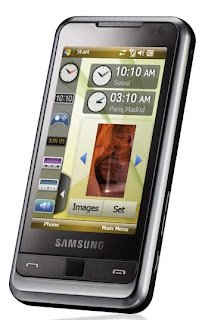Players Tested - Part 4
May 23, 2009After taking yet another one year break, what's new in personal audio? Guess what - the outlook is very much the same as in 2008. There are yet even more convergent devices than ever before. It is almost unthinkable to not own a music phone these days. While mid-range and higher-end cell phone models include this function, we notice that even many budget models include music playback.
One major difference is the emergence of touchscreen phones that were close to non-existent prior to the iPhone's launch. Two years after its June 2007 launch, we see many such models like the Nokia 5800 Xpress Music and the Samsung OMNIA make their presence felt. It's a great time to be a consumer as manufacturers continually try to outmuscle one another to increase their market share.
With so many different products in the market sporting increasingly similar features, it is almost imperative to differentiate one product from another. We do feel there is one aspect that is bound to sway consumers more than other features.
d. Design
Yes. Design is of utmost importance. When all other factors are generally the same, design is probably the single most important factor that can make or break a product. Let's talk about music players first. I don't have to bring out white papers or statistics to prove this. Let's look at the iPod as an example. Apple's industrial design team generally focuses on simple and streamlined hardware designs as can be seen from the Macintosh Classic and PowerBooks. The iPod is no different.

 In 2001, MP3 players were not very prevalent. There was the Diamond Rio 500 and Creative NOMAD Jukebox. Both ideas were great. The Rio's small form factor was a great selling point and the NOMAD's 6GB hard drive could store lots of songs. The problem was that there was no middle ground for both products. The Rio had a meagre 64MB flash capacity with little space for songs and the NOMAD had a bulky form factor that required 4 AA batteries to power up. The original 2001 iPod managed to bring the best of both worlds together by coming up with a 5GB capacity in a relatively small form factor.
In 2001, MP3 players were not very prevalent. There was the Diamond Rio 500 and Creative NOMAD Jukebox. Both ideas were great. The Rio's small form factor was a great selling point and the NOMAD's 6GB hard drive could store lots of songs. The problem was that there was no middle ground for both products. The Rio had a meagre 64MB flash capacity with little space for songs and the NOMAD had a bulky form factor that required 4 AA batteries to power up. The original 2001 iPod managed to bring the best of both worlds together by coming up with a 5GB capacity in a relatively small form factor.
While you may say, hey isn't the Sony Walkman NW-HD3 even more gorgeous than the iPod? Well, I can't disagree with that but note my comment 'when all other factors are generally the same'. For music players, factors are simply not the same. If Sony's SonicStage software supported the MP3 format natively and did away with the needless conversion to its proprietary ATRAC3, who knows what might have happened?
 Let's look beyond music players and let's have a look at netbooks. The manufacturer that gave birth to netbooks is ASUS and it has come up with many different product iterations of Eee PCs. Lenovo has come up with a single model so far and has not had a netbook refresh since its IdeaPad s10. Again, we can attribute the reason to product design.
Let's look beyond music players and let's have a look at netbooks. The manufacturer that gave birth to netbooks is ASUS and it has come up with many different product iterations of Eee PCs. Lenovo has come up with a single model so far and has not had a netbook refresh since its IdeaPad s10. Again, we can attribute the reason to product design.The Eee PC 901 and 1000 series have a somewhat bulky form factor relative to their screen sizes (1.1kg for 9-inch screen and 1.45kg for 10-inch screen).
 By contrast the IdeaPad s10 comes in a svelte 1.2kg for a 10-inch screen.
By contrast the IdeaPad s10 comes in a svelte 1.2kg for a 10-inch screen. To prove the point, as of this post, ASUS has just released the Eee PC 1008HA (about 2 weeks back) with a much improved design. It still has a 10-inch screen but with a much lighter 1.1kg weight.
To prove the point, as of this post, ASUS has just released the Eee PC 1008HA (about 2 weeks back) with a much improved design. It still has a 10-inch screen but with a much lighter 1.1kg weight. That said, if any manufacturers are listening, please please plonk more dough into your industrial design teams. They could make that much of a difference to your product's success.
That said, if any manufacturers are listening, please please plonk more dough into your industrial design teams. They could make that much of a difference to your product's success.












0 comments